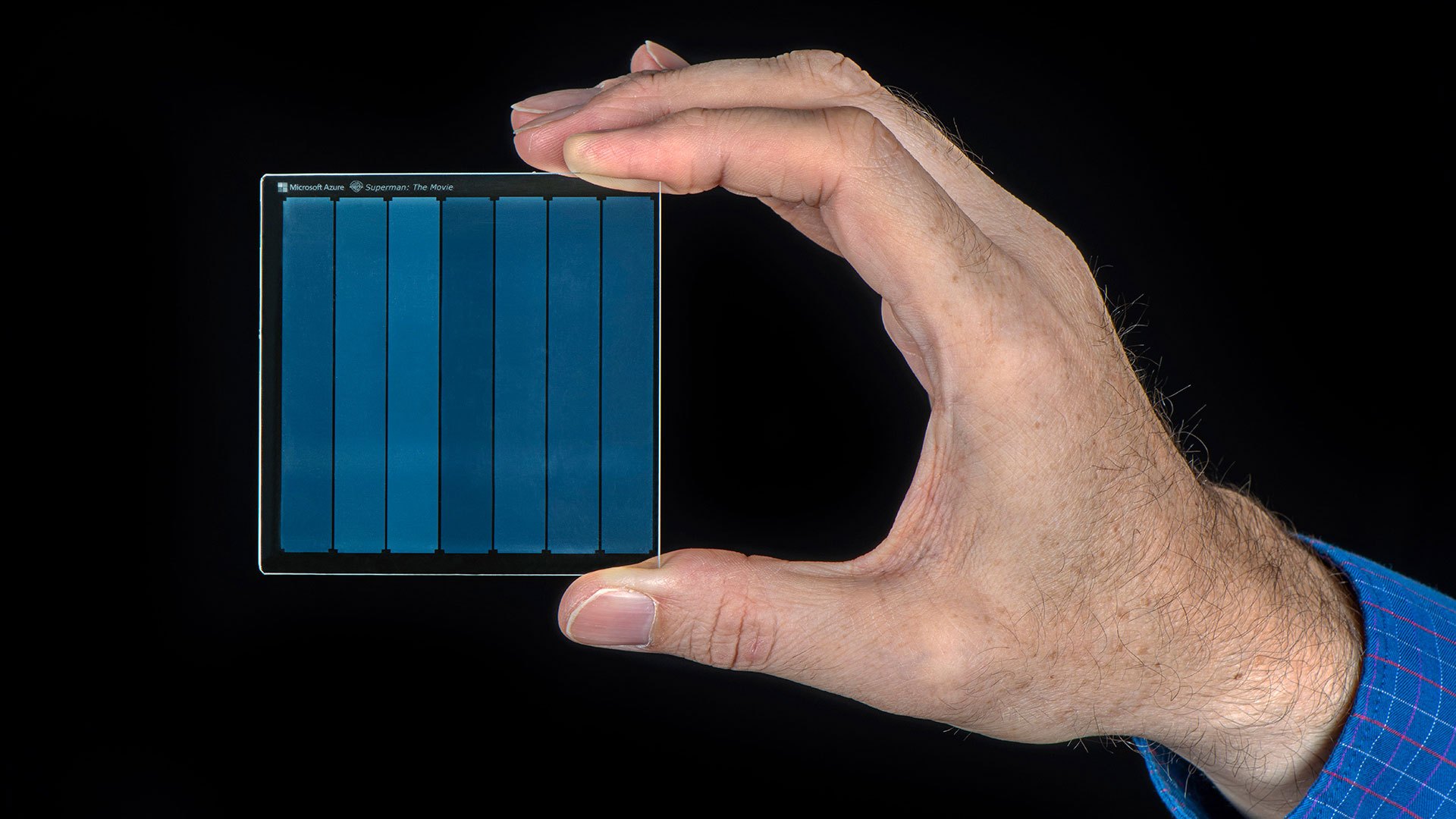Your next hard disk drive could contain glass
Fragile, handle with care

Glass could become a vital component in the world’s first petabyte hard drive in order to satiate humanity's thirst for data storage. That is the growing consensus among storage manufacturers worldwide.
IDC predicts that by 2025, the world will produce 175 zettabytes (ZB) of data, fuelled by the rise in demand for high resolution video and growing IoT networks. That’s nearly six times more than in 2018. By the end of the decade, we could even reach the mind-boggling trillion terabyte mark, given that one ZB is equal to one billion TB.
- Here's our list of the best external hard disk drives around
- Check out our list of the best portable storage on the market
- We've built a list of the best external storage for Macs available
It was Microsoft’s Project Silica that first brought optical data storage into the limelight. Researchers at the world’s largest software company - and the second biggest hyperscaler next to AWS - managed to pack 75.6GB of data onto a piece of fused silica about the size of a 2.5-inch hard disk drive.
To put that into perspective, the world's largest hard disk drives currently max out at 20TB and are in a much larger 3.5-inch form factor.
In a statement to IEEE Explore, Seagate CTO John Morris confirmed its R&D lab is also working on using glass as a medium for optical data storage. “The challenge is to develop systems that can read and write with reasonable throughput,” he said.
Needless to say, rivals such as Western Digital, Toshiba and even Samsung are likely to be following the same route.
However, there are some rather significant challenges to be solved first. Right now, the medium is read-only, making it perfect for Write-Once, Read-Many (WORM) use cases.
Sign up to the TechRadar Pro newsletter to get all the top news, opinion, features and guidance your business needs to succeed!
Further, given there won’t be any terabit internet connection for at least a few decades, backing up one of these monsters to a cloud storage provider might take more than a lifetime, once they hit the market.
- Here's our choice of the best wireless SSDs of 2020

Désiré has been musing and writing about technology during a career spanning four decades. He dabbled in website builders and web hosting when DHTML and frames were in vogue and started narrating about the impact of technology on society just before the start of the Y2K hysteria at the turn of the last millennium.